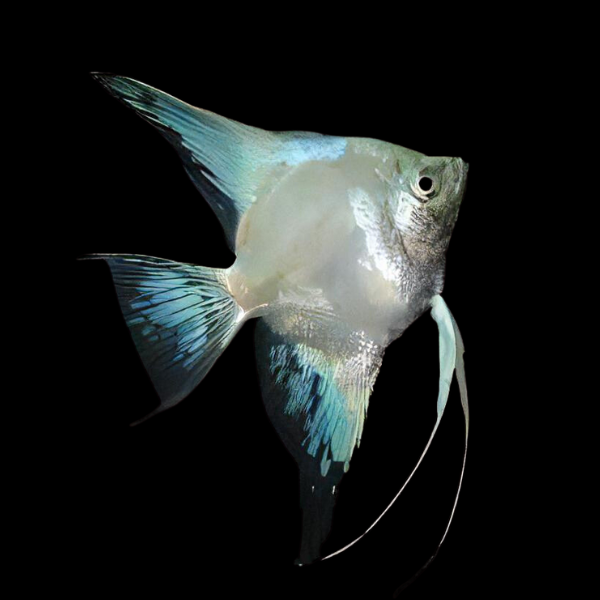Angel-Paraiba(Large)
Angel-Paraiba(Large)
check_circle Fast Shipping
check_circle Quality Products
check_circle Affordable Price
Reach out to us on ''available to order'' items via WhatsApp or email
Low stock: 1 left
Couldn't load pickup availability

Angel-Paraiba(Large)
package_2
Product Description
Product Description
Identification & Background
-
The Paraiba Angelfish is a variety of the species Pterophyllum scalare (the freshwater angelfish).
-
It is a designer morph. According to one description:
“Paraiba is a new angelfish variety derived by combining two single gene mutations; the Stripeless S/S gene and the Platinumblue pb/pb gene.”
-
The name “Paraiba” was inspired by the gemstone Paraiba Tourmaline, known for its deep neon electric blue-green colour.
-
Many of these fish are tank-bred for the aquarium hobby.
Appearance & Colouration
-
What makes the Paraiba Angelfish stand out is the metallic blue / blue-green iridescent patches on the body and fins. For example:
“The metallic blue patching … is like nothing seen on any other Angelfish type.”
-
Variations exist: Some may have blue patches, others may lean toward silver or copper-ish tones in the “patching”.
-
Body shape follows the angelfish standard: tall, triangular profile, long dorsal and anal fins, gracefully flowing. Juveniles may not show full colouration until maturity.
Size & Lifespan
-
Adult size: Many sources give ~ 4–6 inches (10–15 cm) body length, with fins adding more height/length.
-
Lifespan: Likely around 10–15 years under good conditions, similar to other angelfish.
Care Requirements
-
Tank size: Because of their height and long fins, a tall aquarium is preferred. Some recommend at least ~ 75 litres for a young fish.
-
Water parameters (general guideline):
-
Diet: Omnivorous. High-quality flakes or pellets plus frozen/live foods (brine shrimp, bloodworms) help maintain colour and health. Behaviour & compatibility:
-
Generally semi-peaceful, but like many angelfish they can become territorial, especially when spawning.
-
Avoid very small tank-mates (which may be seen as food) and very fin-nippers (which may harass the long fins).
-
Suitable tank mates: peaceful tetras, corydoras, dwarf plecos, etc, given enough space.
-
-
Aquascape suggestions: A planted tank with vertical elements (tall plants, driftwood) helps the fish feel at ease and shows off their vertical body shape and fins nicely. Soft lighting and calm water flow enhance the metallic sheen.
Breeding Notes
-
Like other P. scalare angelfish, they are substrate spawners: pair will clean a flat surface (plant leaf, rock) and lay eggs. The parents guard the eggs/fry.
-
Because this is a specialized morph, if breeding is the goal you’ll want to ensure genetic quality, compatibility, and appropriate conditions for fry survival.
-
Note: juveniles often do not show the full blue/metallic patches until mature. Many buyers report delayed colour development.
Special Considerations
-
Because of the selective breeding (double genes for certain traits), these fish may require slightly better conditions than “standard” angelfish to show their best colour and fin condition.
-
Avoid sudden changes in water chemistry or poor quality water, since angelfish in general are somewhat sensitive compared to hardier tropical fish.
-
When selecting: look for strong body shape, good fin condition (especially if a “veil” fin type), good active behaviour, and colours starting to develop (for juveniles).
-
Some caution: as these are designer strains, check with the seller for health, whether tank-bred or imported, and any genetic information offered.


